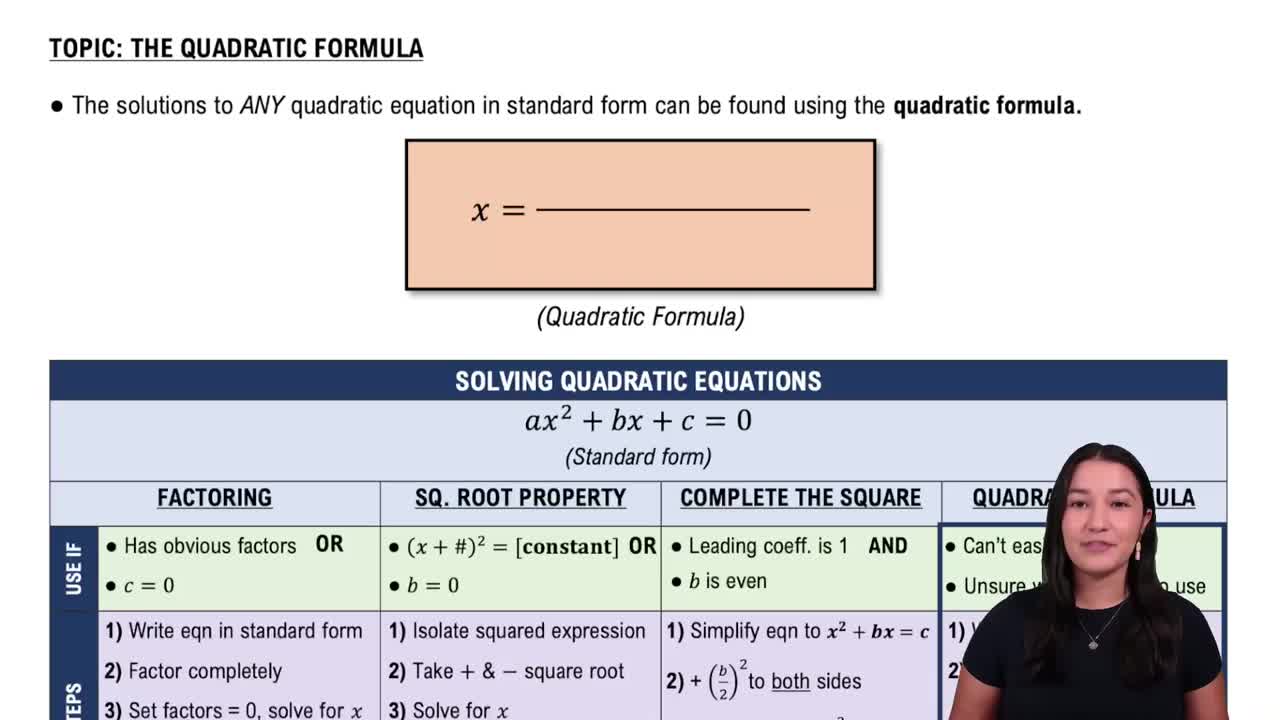Here are the essential concepts you must grasp in order to answer the question correctly.
Quadratic Inequalities
Quadratic inequalities involve expressions of the form ax^2 + bx + c > 0, < 0, ≥ 0, or ≤ 0. To solve these inequalities, one typically finds the roots of the corresponding quadratic equation and then tests intervals between these roots to determine where the inequality holds true. Understanding the behavior of parabolas is crucial, as they can open upwards or downwards depending on the leading coefficient.
Recommended video:
Interval Notation
Interval notation is a mathematical notation used to represent a range of values. It uses parentheses and brackets to indicate whether endpoints are included (closed intervals) or excluded (open intervals). For example, (a, b) means all numbers between a and b, not including a and b, while [a, b] includes both endpoints. This notation is essential for expressing solution sets of inequalities succinctly.
Recommended video:
Graphing Quadratics
Graphing quadratic functions helps visualize their behavior, including the vertex, axis of symmetry, and intercepts. The graph of a quadratic function is a parabola, which can either open upwards or downwards. By plotting the quadratic function and identifying where it is above or below a certain value (like zero), one can effectively determine the solution set for the inequality.
Recommended video:
Solving Quadratic Equations Using The Quadratic Formula
 Verified step by step guidance
Verified step by step guidance Verified Solution
Verified Solution

